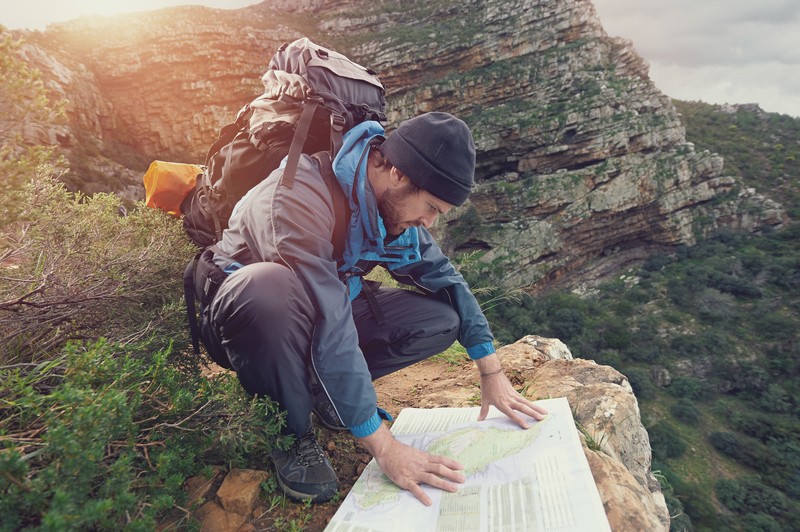One of the best tips you can incorporate into your hike or trip planning is to memorize a map and known landmarks before you set out on your journey.
Doing that will ensure that if you do get lost, you have a better chance of acclimating yourself to your surroundings and using dead reckoning to get out of trouble; you can also use these tips.
Look for Human “Footprints”
By footprints, I really don’t mean literal human footprints. I mean any telltale signs that one or more human being has lived, worked, or even passed through a certain area. Some telltale signs of human existence include: roads, domesticated animals, buildings of any sort, bridges, tree stumps that are a result of sawing or chopping, tire tracks, abandoned fire pits, etc. If you find any human footprints, chances are much higher that there is someone who can take you to safety nearby, or that a person may at least pass through the area again sometime soon. If it’s safe for you to do, explore the areas that surround these human footprints in order to find out whether rescue is closer than you might expect.
If In Doubt – Follow the Water
There’s a reason cities and towns are more often than not very close to water: before we put giant pipes in the ground to carry the water to us, we had to go to the water in order to stay hydrated. Thus, in order to conserve energy, time, and an incredible amount of effort, humans built their homes near bodies of water. To find people, then, find and follow the water. As a general rule of thumb, with running water such as rivers and streams, unless you have some sort of evidence that there might be civilization uphill, follow the water downhill. Travelling downhill will be much easier than travelling uphill, and in survival situations, you should absolutely always preserve as much energy as possible. You will need that energy to continue on in case you are lost for longer than you originally expected you would be.
Head for Clearings: Get Out of the Forest
If you absolutely cannot find a high vantage point near you, say because the area is too densely populated with trees that are much too dangerous to climb, you should try getting out of the forest. Clearings make it much easier to get an accurate picture of your surroundings, which will almost certainly help you to assess what your next step should be. You may even find domesticated animals grazing in a clearing that turned out to be a field, or find that the clearing was the result of a massive number of trees being sawed down to be used as lumber. Clearings may also lead you to finding low-flying aircraft, which when signalled to, may provide rescue. Whatever the case may be, heading for a clearing, so long as it’s not dangerous to get to or too far to travel to, is a good idea.
The easiest way to avoid getting lost is planning – map out a clear route, identify landmarks, put the map to memory and check it often during your trek.
If you do, however, manage to get lost, keeping your head and using tips like these will go a long way to helping you get out of trouble.
For more tips on getting un-lost, check out More Than Just Surviving.
